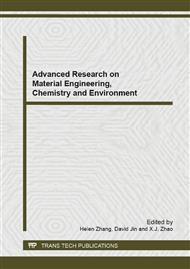p.211
p.215
p.219
p.223
p.228
p.233
p.237
p.241
p.246
Study on Inner Vortex in a Hydrocyclone through Numerical Simulation
Abstract:
Hydrocyclones provide an economic and efficient process of separation in many industries, but there has been little detailed understanding of the strong swirling flow prevailing inside the device, especially the complex inner vortex. This work presented a computational fluid dynamics (CFD) simulation to predict and to evaluate the effects of inlet velocity and the diameter of overflow tube on the inner vortex. The calculation was carried out using commercial CFD code Ansys Fluent 14.0. The results obtained demonstrates both an overlarge inlet velocity and a too small diameter of overflow tube lead to a severe backmixing at the head of hydrocyclone, moreover the latter results in a disorder and unstructured inner vortex.
Info:
Periodical:
Pages:
228-232
Citation:
Online since:
September 2013
Authors:
Keywords:
Price:
Сopyright:
© 2013 Trans Tech Publications Ltd. All Rights Reserved
Share:
Citation:


